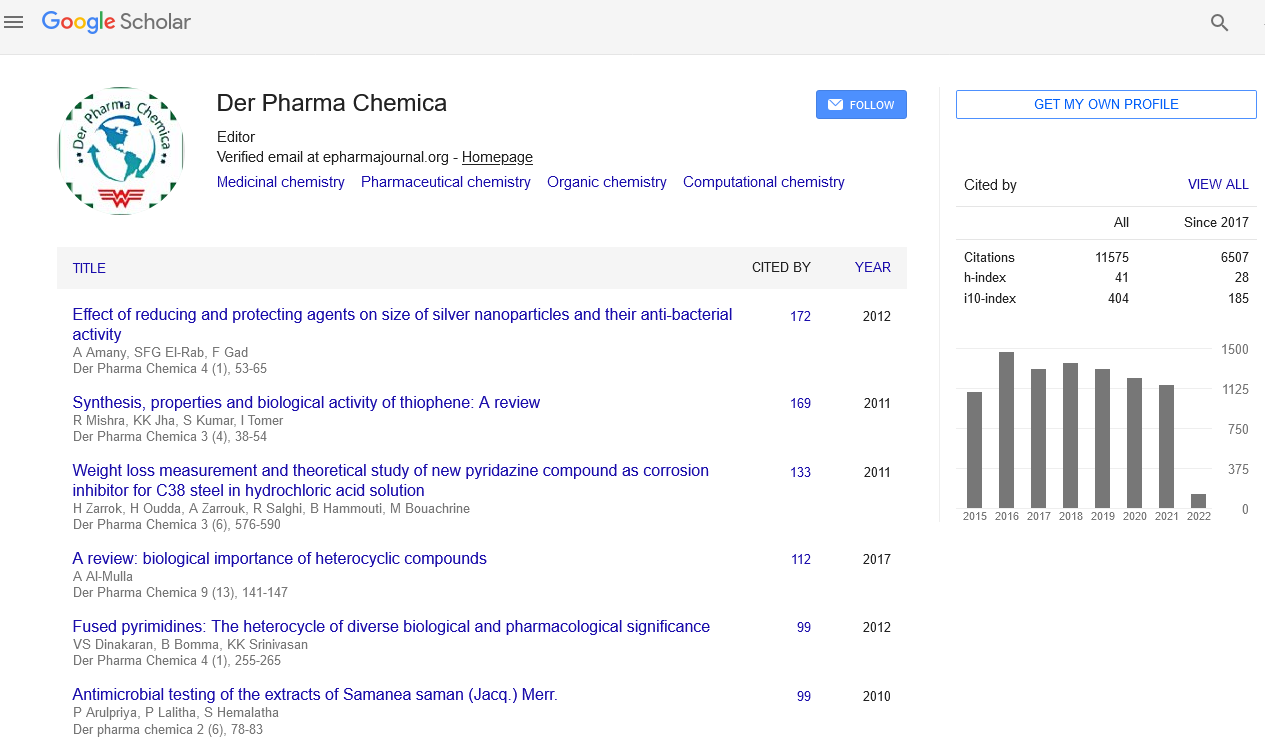Abstract
Liquid chromatographic impurity profiling of Nebivolol Hydrochloride from bulk drug
Author(s): Sachin Uttamrao Kokil, Manish Sudesh BhatiaNebivolol hydrochloride was subjected to different ICH prescribed stress conditions of thermal stress, hydrolysis, oxidation and UV degradation. Two major degradants were detected by HPLC. For establishment of analytical assay, the reaction solutions in which different degradants were formed were separately used, and the separation was optimized by varying the HPLC conditions. Isocratic RP-HPLC separation was achieved on a C18 column (250 mm length ×4.6 mm internal diameter and 5 μm particle size) for both major degradants (impurities) of nebivolol hydrochloride by acid hydrolysis and by oxidation. The mobile phase comprising of methanol:water [80:20v/v, (pH 7.2, adjusted by adding 0.2 M glacial acetic acid into 0.2 M triethyl amine)] was used in both assays. The flow rate was adjusted to 1.0 ml/min and detection was performed at 222 nm using a UV detector. The pure impurities were synthesized by appropriate synthetic route at laboratory scale. Prior to spectroscopic characterization of impurities, they were separated and purified using pH partitioning and/or extraction recrystallization and/or chromatographic techniques. The pure impurities were characterized by spectral studies. The impurities appeared at relative retention time (RRT) of 0.69 min and 0.64 min for acid hydrolysis and oxidation of nebivolol hydrochloride respectively. A simple, precise, and accurate isocratic reversed phase stability indicating high performance liquid chromatographic assay method was developed and validated for determination of two identified impurities. The validation studies established a linear response of acid and oxidative degradation products (impurities). In the presence of nebivolol hydrocloride the limit of detection for its acid degradation product was 1.45μg/ml and that for its oxidative degradation product was 2.74μg/ml. The degradants produced as a result of stress studies and drug did not interfere with detection of each other, and the assay can thus be considered stability-indicating.
Select your language of interest to view the total content in your interested language
Google Scholar citation report
Citations : 25868
Der Pharma Chemica received 25868 citations as per Google Scholar report
Der Pharma Chemica peer review process verified at publons
DOWNLOADS




